The Impact of Agriculture on Freshwater Ecosystems
Agriculture plays a crucial role in our lives, providing food and resources that sustain human populations. However, the impact of agricultural practices on freshwater ecosystems is a double-edged sword. While agriculture can support local economies and food security, it also poses significant challenges to the health of our freshwater resources. In this article, we will explore how various agricultural activities influence water quality, biodiversity, and the overall health of these vital ecosystems.
One of the most pressing issues arising from agricultural practices is water quality degradation. When rain falls on fields treated with fertilizers and pesticides, these chemicals can wash into nearby rivers, lakes, and streams, leading to what is known as agricultural runoff. This runoff often contains high levels of nutrients like nitrogen and phosphorus, which can result in nutrient pollution. The consequences are alarming: excessive nutrients can trigger harmful algal blooms that not only threaten aquatic life but also pose risks to human health. Imagine a beautiful lake, once teeming with life, turning into a green, toxic soup due to unchecked agricultural runoff. This transformation can lead to the death of fish and other aquatic organisms, creating a ripple effect throughout the ecosystem.
Intensive agricultural practices often lead to habitat destruction, which in turn results in a significant decline in biodiversity within freshwater ecosystems. As natural habitats are converted into farmlands, the delicate balance that supports various species is disrupted. The loss of biodiversity can have dire consequences for ecosystem resilience. For example, when certain species vanish, it can lead to a domino effect where other species that rely on them for food or habitat also decline. This loss of interconnectedness among species can weaken the ecosystem's ability to recover from environmental stresses, making it more vulnerable to collapse.
The decline in biodiversity significantly affects fish populations, leading to alterations in food webs and contributing to overfishing and species extinction. Fish are not just a vital food source for humans; they also play a key role in maintaining the ecological balance of freshwater systems. When fish populations dwindle, it can cause a cascade of issues, including the proliferation of algae and a decline in water quality. Understanding these dynamics is crucial for effective conservation efforts. It’s like removing a major player from a sports team; the team’s performance suffers, and the overall game changes.
Agricultural activities often facilitate the introduction of invasive species into freshwater ecosystems. These invaders can outcompete native species for resources, disrupting the ecological balance that has developed over centuries. The introduction of invasive species can lead to long-term ecological consequences, such as reduced species diversity and altered habitat structures. For instance, the introduction of certain plant species can choke out native plants, reducing the habitat available for fish and other aquatic organisms.
Changes in water quality and habitat destruction can adversely affect aquatic plants, which are vital for maintaining ecosystem health. Aquatic plants provide essential services, including oxygen production, nutrient cycling, and habitat for various aquatic organisms. When agricultural runoff leads to nutrient overload, it can result in the overgrowth of certain plants, which can suffocate others, leading to a decline in overall plant diversity. This decline not only impacts the plants themselves but also the myriad of species that rely on them for survival. Think of aquatic plants as the lungs of the freshwater ecosystem; without them, the system struggles to breathe.
Agriculture is a major consumer of freshwater resources, significantly impacting water availability for ecosystems and communities. The balance between agricultural demands and sustainable water use is delicate and often precarious. As agricultural practices expand, the competition for freshwater resources intensifies, leading to potential shortages for both natural ecosystems and human populations. This situation raises important questions: How can we ensure that agricultural practices do not compromise the water needs of our ecosystems? What steps can be taken to promote sustainable water use in agriculture?
Adopting sustainable agricultural practices can mitigate negative impacts on freshwater ecosystems. By implementing techniques that promote water conservation and ecosystem health, farmers can help protect these vital resources. Sustainable practices include crop rotation, cover cropping, and reduced tillage, all of which can enhance soil health and reduce runoff. These methods not only benefit the environment but can also improve crop yields and farmer profitability.
Organic farming practices reduce chemical runoff and enhance soil health, contributing to improved water quality in nearby freshwater ecosystems. By avoiding synthetic fertilizers and pesticides, organic farmers help maintain the natural balance of nutrients in the soil and water. This section examines the benefits of organic methods, which include healthier ecosystems, improved biodiversity, and reduced pollution levels.
Agroecology integrates ecological principles into agricultural practices, promoting biodiversity and ecosystem resilience. This approach offers solutions for sustainable food production while protecting freshwater ecosystems. By focusing on the interrelationships between plants, animals, and the environment, agroecology seeks to create a more harmonious balance, ensuring that agricultural practices support rather than harm our precious freshwater resources.
- How does agriculture affect water quality? Agricultural runoff can introduce harmful chemicals and nutrients into freshwater ecosystems, leading to pollution and algal blooms.
- What are the consequences of biodiversity loss in freshwater ecosystems? Reduced biodiversity can weaken ecosystem resilience, making it more vulnerable to environmental stresses and leading to species extinction.
- What sustainable practices can farmers adopt? Farmers can implement crop rotation, cover cropping, and organic farming to promote water conservation and ecosystem health.
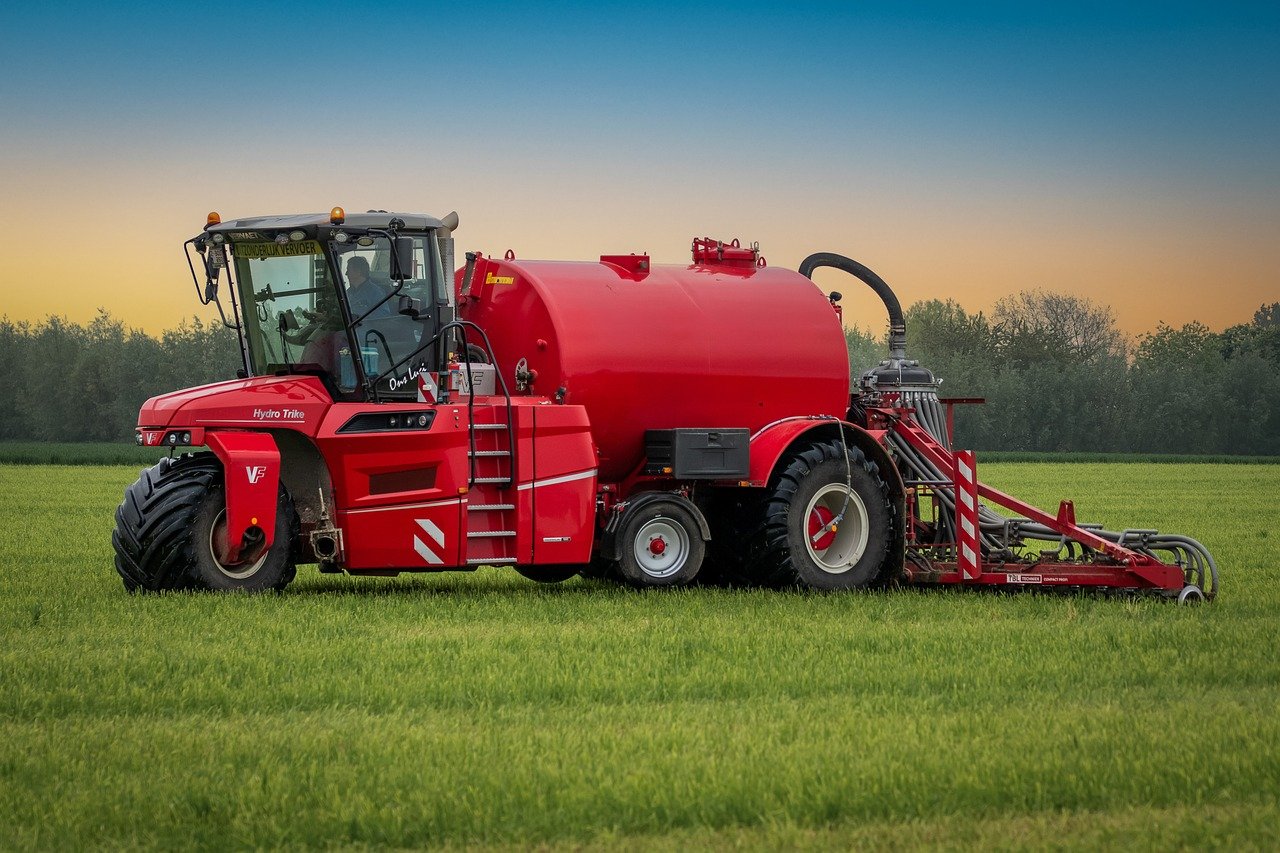
Water Quality Degradation
Agricultural runoff is a significant contributor to the degradation of water quality in freshwater ecosystems. When it rains, fertilizers and pesticides used on farmlands can easily wash into nearby rivers, lakes, and streams. This runoff contains high levels of nutrients, particularly nitrogen and phosphorus, which can lead to a phenomenon known as nutrient pollution. Imagine a garden that receives too much fertilizer; instead of thriving, it becomes overwhelmed and choked with growth. Similarly, freshwater ecosystems suffer under the weight of excess nutrients, leading to harmful algal blooms that can devastate aquatic life.
These algal blooms are not just unsightly; they can produce toxins that are harmful to both aquatic organisms and humans. Fish and other aquatic animals may find themselves in a toxic environment, leading to mass die-offs and a decline in biodiversity. Furthermore, the presence of these toxins can make water unsafe for recreational activities and drinking purposes. In fact, a recent study indicated that over 50% of the lakes in agricultural regions showed signs of nutrient pollution, highlighting a pressing environmental crisis.
To put this into perspective, let's consider the following table that illustrates the impact of agricultural runoff on water quality:
| Impact | Description |
|---|---|
| Nutrient Pollution | Excessive nutrients lead to algal blooms, reducing oxygen levels in water. |
| Toxicity | Harmful algal blooms produce toxins that threaten human and animal health. |
| Reduced Biodiversity | Decline in aquatic species due to habitat degradation and toxic environments. |
| Water Safety | Contaminated water sources pose risks for drinking and recreation. |
This degradation of water quality not only affects the aquatic ecosystem but also has far-reaching implications for communities that rely on these water bodies for drinking water, recreation, and fishing. It's a vicious cycle: as water quality worsens, the health of aquatic ecosystems declines, leading to further pollution and habitat loss. The question we must ask ourselves is, how can we break this cycle?
One of the key solutions lies in understanding the relationship between agricultural practices and water quality. By adopting more sustainable farming techniques, we can significantly reduce the amount of harmful runoff entering our freshwater systems. Practices such as cover cropping, buffer strips, and reduced fertilizer application can make a difference. These methods not only protect water quality but also enhance soil health, creating a win-win scenario for both farmers and the environment.
In conclusion, the impact of agricultural runoff on water quality is a critical issue that requires immediate attention. By recognizing the consequences of our farming practices and taking steps toward sustainability, we can preserve the integrity of our freshwater ecosystems for future generations.
- What is agricultural runoff? Agricultural runoff is water from rain or irrigation that flows over farm fields, carrying fertilizers, pesticides, and other chemicals into nearby water bodies.
- How does nutrient pollution affect freshwater ecosystems? Nutrient pollution leads to algal blooms, which can deplete oxygen levels in the water, harming aquatic life and disrupting ecosystems.
- What are some sustainable practices to reduce water quality degradation? Sustainable practices include using cover crops, establishing buffer strips, and optimizing fertilizer use to minimize runoff.
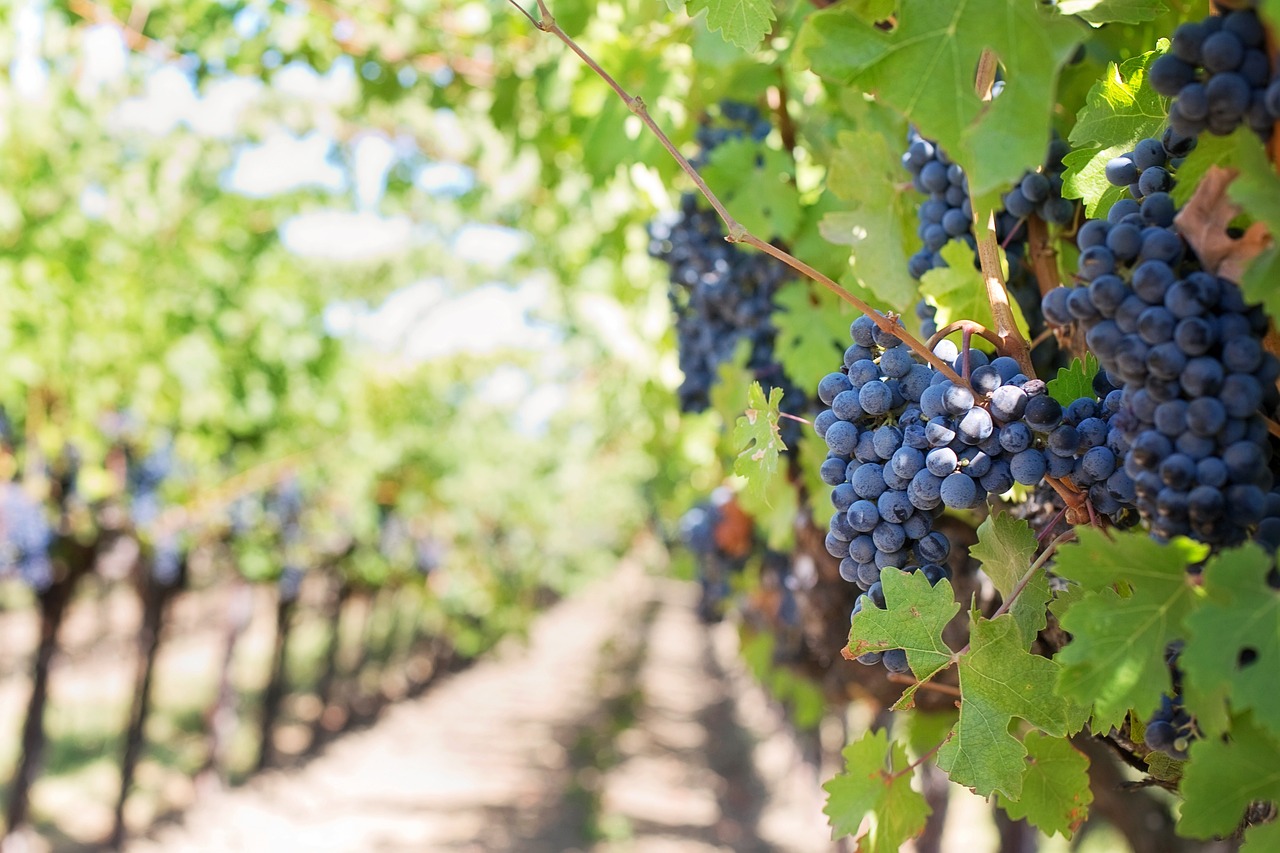
Biodiversity Loss
Agriculture, while essential for feeding the world's growing population, can have a devastating impact on biodiversity, particularly in freshwater ecosystems. The intensive farming practices that dominate our agricultural landscape often lead to significant habitat destruction. This loss of habitat is not just a minor concern; it can result in a dramatic decline in the variety of species that call these ecosystems home. Imagine a vibrant tapestry of life, where each thread represents a different species, all interconnected and dependent on one another. When one thread is pulled, the entire tapestry begins to unravel.
As agricultural lands expand, wetlands and riparian zones—critical habitats for countless aquatic and terrestrial species—are often drained or altered. This transformation not only reduces the physical space available for wildlife but also disrupts the delicate balance of these ecosystems. For example, when wetlands are drained for crop production, the natural filtration systems that maintain water quality are lost, leading to further degradation of the environment.
The consequences of reduced biodiversity are profound. Ecosystems with a rich variety of species tend to be more resilient, able to withstand environmental changes and recover from disturbances. In contrast, ecosystems that lack diversity are vulnerable to collapse. When a single species is lost, it can trigger a chain reaction, affecting other species that rely on it for food or habitat. This is particularly evident in freshwater ecosystems where fish, amphibians, and invertebrates all play crucial roles in maintaining ecological balance.
One of the most alarming aspects of biodiversity loss is its impact on fish populations. Fish are not just a food source for humans; they are integral to the health of aquatic ecosystems. As fish populations decline due to habitat loss and pollution, the entire food web is disrupted. Predators may struggle to find food, leading to further declines, while prey species may experience population booms, resulting in overpopulation and subsequent die-offs.
Moreover, the introduction of invasive species, often facilitated by agricultural activities, exacerbates biodiversity loss. These non-native species can outcompete local flora and fauna, leading to a decline in native populations. The resulting ecological imbalance can have long-lasting effects, making it crucial for us to understand the dynamics of these changes.
Ultimately, the loss of biodiversity in freshwater ecosystems is a complex issue that requires immediate attention. It’s essential to recognize that every species plays a role in the ecosystem's health, and the loss of even a single species can have far-reaching consequences. As stewards of the environment, we must advocate for practices that protect these vital habitats and promote biodiversity.
- What are some of the main causes of biodiversity loss in freshwater ecosystems?
The main causes include habitat destruction due to agriculture, pollution from fertilizers and pesticides, introduction of invasive species, and climate change.
- How does biodiversity loss affect human communities?
Biodiversity loss can lead to decreased water quality, reduced fish populations, and increased vulnerability to natural disasters, all of which can impact local economies and food security.
- What can be done to mitigate biodiversity loss?
Implementing sustainable agricultural practices, restoring habitats, and protecting natural ecosystems are crucial steps towards mitigating biodiversity loss.
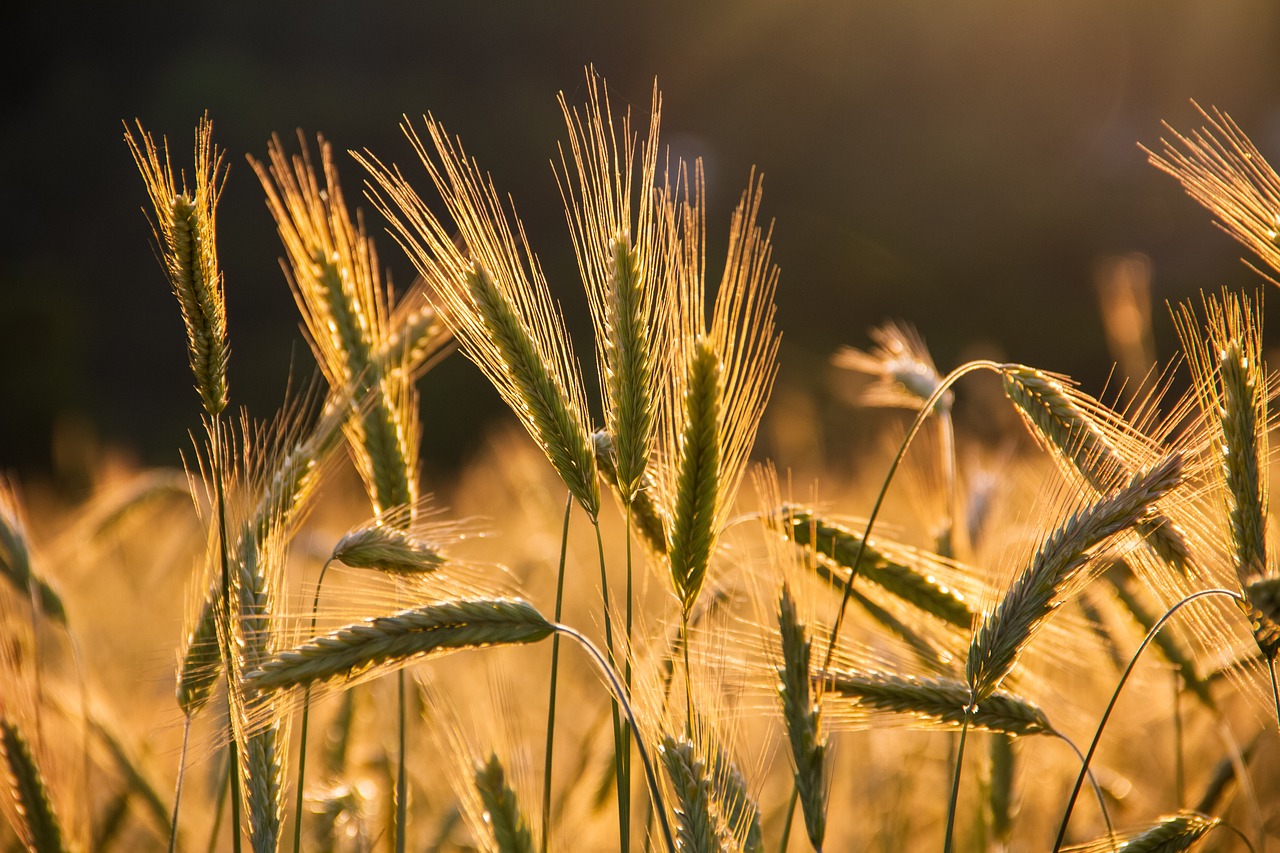
Impact on Fish Populations
The decline in biodiversity within freshwater ecosystems has a profound impact on fish populations, and understanding this relationship is vital for conservation efforts. As agricultural practices intensify, they often lead to habitat destruction, which in turn disrupts the delicate balance of aquatic environments. When native habitats are altered or destroyed, fish species face significant challenges. Imagine a bustling city where the roads are suddenly blocked off; just like traffic would be affected, fish populations struggle to find food and shelter when their habitats are compromised.
Moreover, the introduction of pollutants from agricultural runoff can create a toxic environment for fish. Nutrient pollution, particularly from fertilizers, can lead to excessive growth of algae, known as algal blooms. These blooms may seem harmless at first glance, but they can deplete oxygen levels in the water, creating dead zones where fish cannot survive. In essence, it’s like throwing a massive party in a small room; eventually, there’s not enough air for everyone to breathe. This scenario not only affects existing fish populations but also hinders the reproduction of various species, further exacerbating the decline.
As fish populations dwindle, the entire food web is affected. Fish are not just solitary creatures; they play crucial roles in their ecosystems. The loss of a single species can ripple through the food chain, affecting everything from aquatic plants to larger predators. For instance, if a primary fish species disappears, the organisms that rely on it for food may also decline, leading to a cascading effect throughout the ecosystem. This phenomenon is akin to removing a key player from a sports team; without them, the team's performance suffers significantly.
Additionally, overfishing can become a pressing concern when fish populations are already stressed by environmental changes. As fishermen seek to catch what remains, the pressure on these dwindling populations intensifies. This situation can lead to a vicious cycle where reduced fish numbers lead to increased fishing efforts, further depleting the population and threatening species with extinction. To put it simply, it’s a race to the bottom, and the fish are the ones losing out.
Understanding the dynamics of fish populations in relation to agricultural impacts is crucial for developing effective conservation strategies. By recognizing the interconnectedness of agricultural practices and aquatic ecosystems, we can work towards solutions that not only support sustainable farming but also promote the health of our precious freshwater resources.
- How does agricultural runoff affect fish populations?
Agricultural runoff introduces pollutants and nutrients into freshwater ecosystems, leading to harmful algal blooms and oxygen depletion, which can be detrimental to fish survival. - What role do fish play in freshwater ecosystems?
Fish are integral to maintaining the balance of aquatic ecosystems, serving as both predators and prey, and contributing to nutrient cycling. - Can sustainable farming practices help fish populations?
Yes, adopting sustainable agricultural practices can reduce runoff, improve water quality, and create healthier habitats for fish and other aquatic organisms.
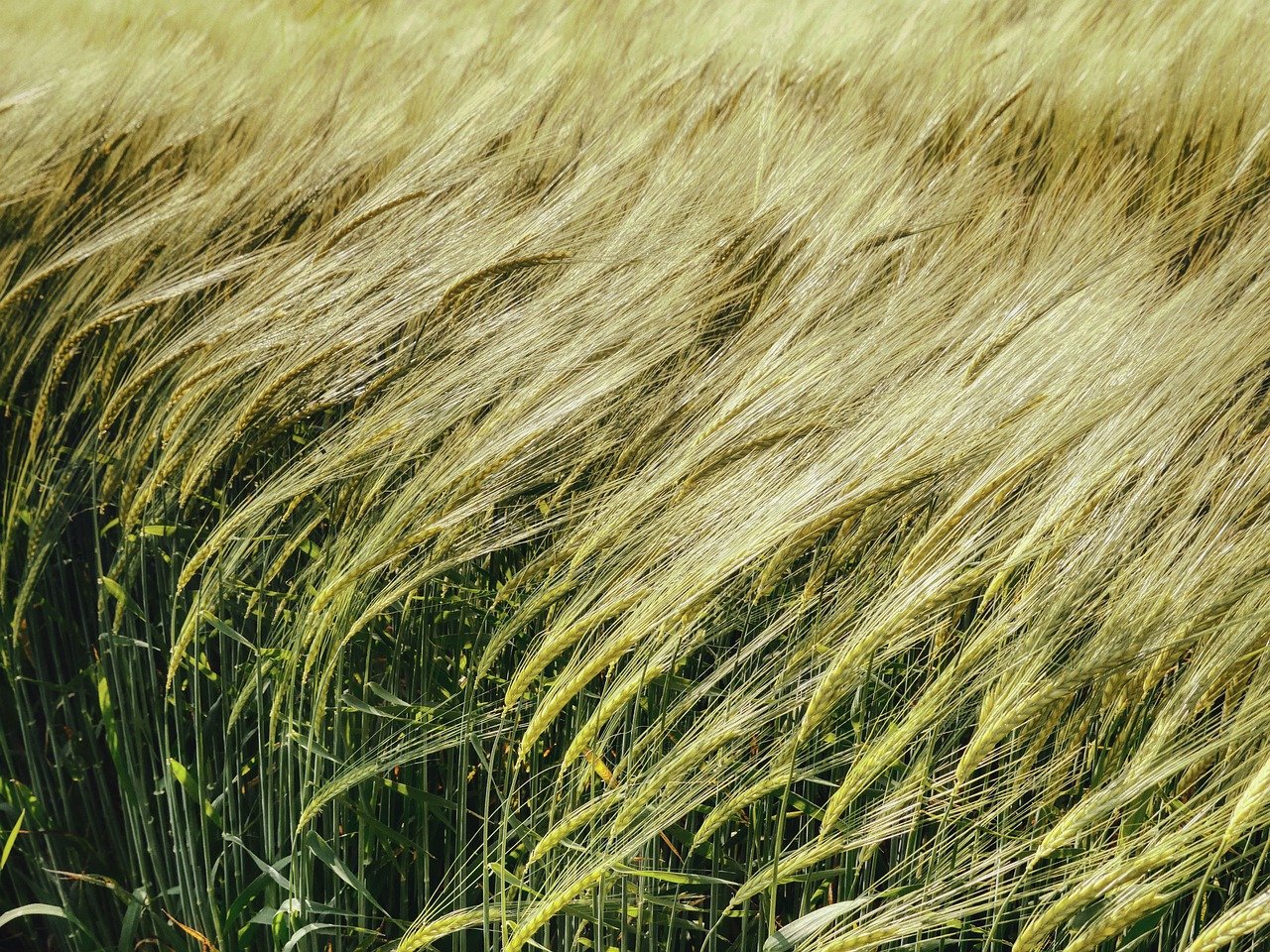
Invasive Species Introduction
Invasive species are like uninvited guests at a party, crashing into freshwater ecosystems and disrupting the natural flow of life. These species, often introduced through agricultural practices, can outcompete native flora and fauna for resources, leading to a cascade of ecological imbalances. When farmers expand their fields or use water sources for irrigation, they inadvertently create pathways for these invaders to spread. This phenomenon not only threatens the survival of native species but also alters the very structure of the ecosystem.
For instance, consider the case of the zebra mussel, a notorious invasive species that has wreaked havoc in North American lakes and rivers. Originally from the Caspian Sea, zebra mussels were introduced to the Great Lakes via ballast water from ships. Once established, they proliferated rapidly, filtering out algae and disrupting the food web. This led to a decline in native mussel populations and significant changes in water quality, affecting both aquatic life and human activities such as fishing and recreation.
The introduction of invasive species can be likened to introducing a new player into a well-rehearsed orchestra. The new player may play their own tune, but it can drown out the harmonious melodies of the existing musicians. This disruption can lead to the decline of native species, which are often less adaptable to competition from invaders. The consequences can be severe, leading to the extinction of local species and a reduction in biodiversity, which is crucial for a healthy ecosystem.
Moreover, the presence of invasive species can alter the physical characteristics of freshwater habitats. For example, certain invasive plants can change the sediment composition and water flow patterns, making it difficult for native species to thrive. This transformation can create a feedback loop where the ecosystem becomes increasingly inhospitable to native species, further exacerbating the problem.
To illustrate the impact of invasive species, consider the following table that highlights some common invasive species found in freshwater ecosystems and their effects:
| Invasive Species | Origin | Impact on Ecosystem |
|---|---|---|
| Zebra Mussel | Caspian Sea | Outcompetes native mussels; alters water quality |
| Asian Carp | Asia | Displaces native fish; disrupts food webs |
| Water Hyacinth | South America | Clogs waterways; reduces oxygen levels |
Addressing the issue of invasive species requires concerted efforts from farmers, conservationists, and policymakers alike. Implementing best management practices in agriculture can help minimize the introduction and spread of these invaders. For instance, using native plants for erosion control and avoiding the use of contaminated water sources for irrigation can significantly reduce the risk of invasive species establishment.
In conclusion, the introduction of invasive species through agricultural practices poses a significant threat to freshwater ecosystems. By understanding the dynamics of these invaders and taking proactive steps, we can protect our native species and preserve the delicate balance of our aquatic environments.
- What are invasive species? Invasive species are non-native organisms that, when introduced to a new environment, can outcompete local species for resources, leading to ecological imbalances.
- How do invasive species affect freshwater ecosystems? They can disrupt food webs, reduce biodiversity, and alter physical habitats, making it difficult for native species to survive.
- What can be done to prevent the spread of invasive species? Implementing best management practices in agriculture, using native plants, and avoiding contaminated water sources can help mitigate the introduction of invasive species.

Effects on Aquatic Plants
Aquatic plants play a crucial role in maintaining the health and balance of freshwater ecosystems. They provide essential habitat for various aquatic organisms, including fish, insects, and amphibians, while also contributing to water quality through processes like nutrient uptake and oxygen production. However, agricultural practices often lead to significant disruptions in these vital plant communities. For instance, the introduction of excess nutrients from fertilizers can result in eutrophication, a process that causes rapid plant growth followed by die-off, which in turn depletes oxygen levels in the water and creates dead zones.
Moreover, habitat destruction due to land conversion for agriculture can lead to the loss of native aquatic plant species. When wetlands are drained or riverbanks are altered, the delicate balance that supports diverse plant life is thrown into disarray. This loss not only affects the plants themselves but also the entire ecosystem that relies on them. Without a healthy population of aquatic plants, fish and other wildlife struggle to find food and shelter, which can lead to a decline in their populations.
Interestingly, the effects of agricultural runoff on aquatic plants can vary. Some species may thrive in nutrient-rich waters, while others may be outcompeted or suffer from the increased competition for light and space. This shift can result in a homogenization of plant communities, where a few fast-growing species dominate, leading to a decline in biodiversity. The table below illustrates the relationship between nutrient levels and aquatic plant diversity:
| Nutrient Level (mg/L) | Diversity Index | Common Species |
|---|---|---|
| Low (0-10) | High | Elodea, Water Lily |
| Moderate (11-30) | Moderate | Cattails, Duckweed |
| High (31+) | Low | Green Algae, Phalaris |
In addition to nutrient pollution, the physical alterations of water bodies due to agricultural practices can lead to increased sedimentation. This sediment can smother aquatic plants, making it difficult for them to photosynthesize and grow. The combination of these factors creates a challenging environment for aquatic plants, further jeopardizing the health of freshwater ecosystems.
Ultimately, the health of aquatic plants is an indicator of the overall health of freshwater ecosystems. Protecting these vital organisms is essential not only for maintaining biodiversity but also for ensuring the resilience of these ecosystems against the pressures of climate change and human activity. As we move forward, it is imperative to adopt practices that safeguard aquatic plants and, by extension, the ecosystems that depend on them.
- What role do aquatic plants play in freshwater ecosystems?
Aquatic plants provide habitat, improve water quality, and support biodiversity by serving as food and shelter for various organisms. - How does agricultural runoff affect aquatic plants?
Agricultural runoff introduces excess nutrients, leading to eutrophication, which can harm aquatic plants by causing rapid growth followed by die-off. - What are some sustainable practices to protect aquatic plants?
Implementing organic farming, reducing chemical use, and restoring natural habitats can help protect aquatic plants and improve freshwater ecosystems.

Water Consumption and Availability
Agriculture is often referred to as the backbone of our food system, but did you know that it’s also one of the biggest consumers of freshwater resources? In fact, it accounts for approximately 70% of global freshwater withdrawals. This staggering figure highlights the intense competition between agricultural demands and the availability of water for other uses, including drinking, sanitation, and supporting natural ecosystems. As the world’s population continues to grow, the pressure on freshwater resources is only going to increase, leading us to ask: how can we balance these competing needs?
Water is essential not just for crops but also for livestock, making it a critical component of agricultural productivity. The methods used in farming can significantly influence water availability. For instance, traditional irrigation techniques often lead to water wastage, while modern systems like drip irrigation can enhance efficiency. It’s like comparing a leaky faucet to a well-placed hose; one wastes precious resources while the other delivers water directly where it’s needed.
Moreover, the impact of agriculture on water availability extends beyond mere consumption. Intensive farming practices can lead to groundwater depletion, where the rate of water extraction exceeds the natural replenishment rate. This is particularly alarming in regions that rely heavily on aquifers for irrigation. The consequences are dire: as water tables drop, not only do farmers face challenges in maintaining crop yields, but entire ecosystems can also suffer. Wetlands, rivers, and lakes may dry up, leading to a cascade of negative effects on biodiversity and water quality.
To understand this issue more clearly, let’s take a look at a comparison of water usage in various agricultural practices:
| Agricultural Practice | Water Usage (liters per kg of product) |
|---|---|
| Cereal Crops | 1,500 |
| Vegetable Crops | 600 |
| Beef Production | 15,000 |
| Poultry Production | 4,000 |
This table illustrates just how much water different agricultural practices can consume. With beef production requiring a staggering 15,000 liters of water for just one kilogram of meat, it raises the question: is this sustainable? The answer is complex, but it certainly underscores the need for more efficient practices.
As we look to the future, the integration of sustainable agricultural practices is crucial. Techniques such as rainwater harvesting, crop rotation, and the use of drought-resistant crop varieties can help mitigate the impact of agriculture on freshwater resources. It’s about finding that sweet spot where we can produce food without compromising the health of our water systems. Think of it as a careful balancing act, where every drop counts and every decision can have far-reaching consequences.
In conclusion, while agriculture plays a vital role in feeding the world, it’s imperative that we address the challenges of water consumption and availability. By adopting sustainable practices and being mindful of our water use, we can ensure that both our agricultural needs and our precious freshwater ecosystems can thrive together.
- What are the main factors contributing to water scarcity in agriculture?
Water scarcity in agriculture is primarily caused by over-extraction of water resources, inefficient irrigation practices, and climate change, which can alter precipitation patterns. - How can farmers reduce their water usage?
Farmers can reduce water usage by implementing efficient irrigation systems, practicing crop rotation, and choosing drought-resistant crop varieties. - What role does technology play in sustainable agriculture?
Technology plays a significant role by providing tools for precision farming, which optimizes water use and minimizes waste. - Why is biodiversity important for freshwater ecosystems?
Biodiversity is crucial for maintaining ecosystem resilience, ensuring that various species can thrive and adapt to changes in their environment.

Sustainable Agricultural Practices
Sustainable agricultural practices are essential for minimizing the negative impacts of farming on freshwater ecosystems. By adopting methods that prioritize environmental health, farmers can help ensure that water quality is maintained and biodiversity is preserved. The focus here is on creating a harmonious balance between agricultural productivity and ecological integrity, which is vital for the future of our planet.
One of the most effective ways to achieve sustainability in agriculture is through organic farming. This method avoids the use of synthetic fertilizers and pesticides, which are major contributors to water pollution. Instead, organic farmers rely on natural inputs, such as compost and green manure, to enrich the soil. This not only enhances soil health but also reduces the risk of harmful runoff that can lead to nutrient pollution in nearby freshwater bodies. Studies have shown that organic farming can lead to a significant improvement in water quality, fostering a healthier ecosystem for aquatic life.
Another promising approach is agroecology, which integrates ecological principles into farming practices. Agroecology emphasizes the importance of biodiversity and ecosystem services, encouraging farmers to cultivate a variety of crops and incorporate natural pest control methods. This diversity can enhance ecosystem resilience, making agricultural systems less vulnerable to pests and diseases. By promoting a variety of species, agroecology not only supports wildlife but also contributes to the stability of freshwater ecosystems.
To illustrate the benefits of these sustainable practices, consider the following table that compares conventional farming with organic and agroecological approaches:
| Aspect | Conventional Farming | Organic Farming | Agroecology |
|---|---|---|---|
| Pesticide Use | High | None | Minimal |
| Soil Health | Degraded | Improved | Enhanced |
| Water Quality | Declining | Improving | Stable |
| Biodiversity | Low | High | Very High |
Moreover, implementing practices such as crop rotation and cover cropping can significantly enhance soil structure and fertility while reducing erosion. These methods also help in retaining moisture in the soil, which is crucial during dry seasons. By maintaining healthy soil, farmers can ensure that less water is required for irrigation, thereby conserving freshwater resources that are vital for both agriculture and natural ecosystems.
In addition, sustainable practices can promote the use of integrated pest management (IPM). This approach combines biological, cultural, and mechanical methods to control pests, significantly reducing the reliance on chemical pesticides. By fostering natural predators and using crop diversity, farmers can manage pest populations effectively while minimizing harm to aquatic ecosystems.
Ultimately, the shift towards sustainable agricultural practices is not just a trend; it is a necessity for the health of our planet. As we continue to face challenges like climate change and water scarcity, embracing these practices can lead to a more resilient agricultural system. By prioritizing sustainability, we can protect our freshwater ecosystems and ensure that they thrive for generations to come.
- What are sustainable agricultural practices?
Sustainable agricultural practices are methods of farming that prioritize environmental health, resource conservation, and the well-being of communities. They include organic farming, agroecology, crop rotation, and integrated pest management. - How does organic farming benefit freshwater ecosystems?
Organic farming reduces the use of synthetic chemicals, leading to lower levels of water pollution and improved water quality in nearby freshwater bodies. - What is agroecology?
Agroecology is an approach that integrates ecological principles into agricultural practices, promoting biodiversity and resilience within farming systems. - Why is biodiversity important in agriculture?
Biodiversity enhances ecosystem resilience, supports food webs, and contributes to the stability and productivity of agricultural systems.
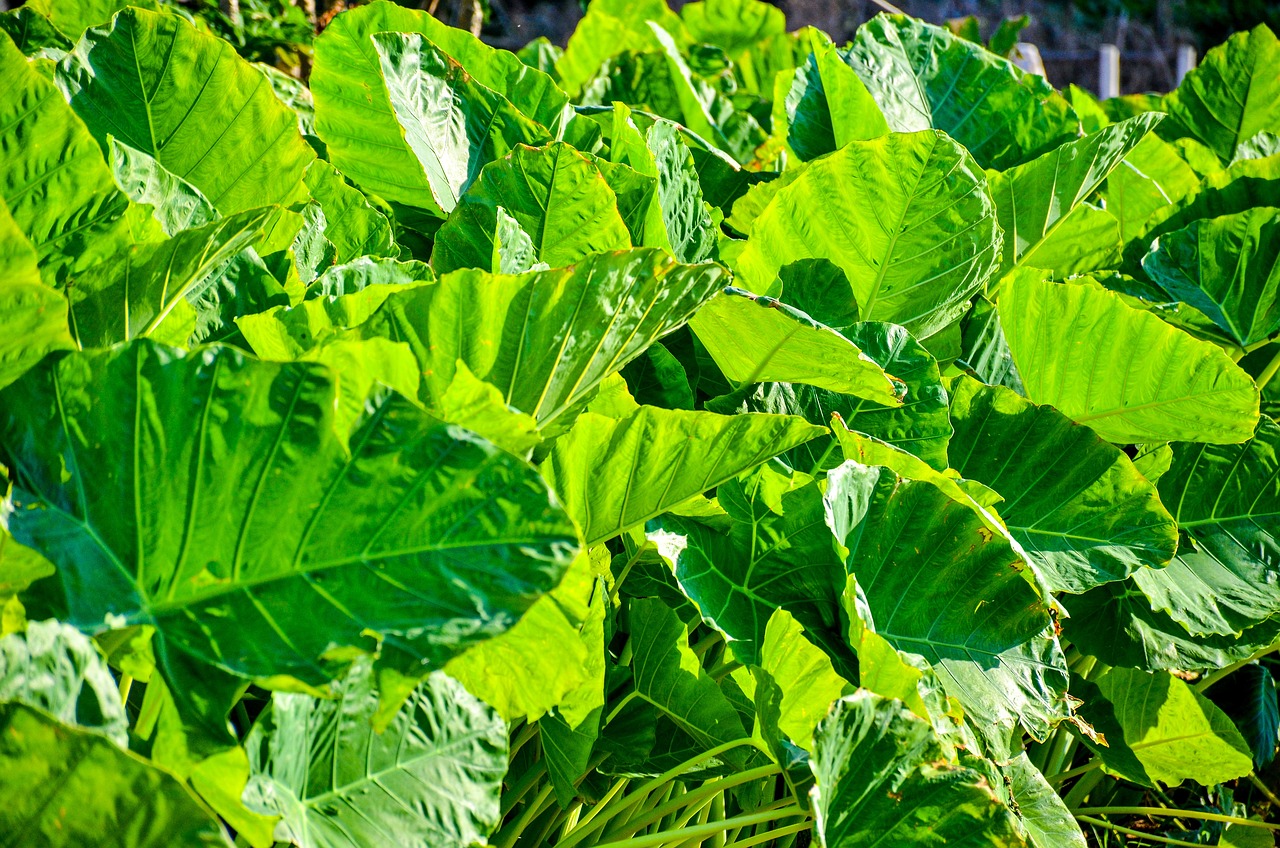
Organic Farming
Organic farming is not just a buzzword; it’s a revolutionary approach that emphasizes harmony between agriculture and the environment. By steering clear of synthetic fertilizers and pesticides, organic farming promotes healthier ecosystems and enhances water quality in freshwater systems. Imagine a world where crops flourish without the toxic residues that can seep into our rivers and lakes. That’s the beauty of organic farming! This method not only nurtures the soil but also creates a buffer against the harmful effects of agricultural runoff.
One of the standout benefits of organic farming is its ability to enhance soil health. Healthy soil is like a sponge, capable of retaining moisture and nutrients, which reduces the need for excessive irrigation. This is crucial, especially in areas facing water scarcity. According to studies, organic farms typically have higher organic matter content in their soil, which can lead to improved water retention and less erosion. As a result, organic farming practices can significantly reduce the amount of water needed for irrigation, benefiting both farmers and freshwater ecosystems.
Moreover, organic farming practices often include crop rotation and polyculture, which play a vital role in maintaining biodiversity. By planting diverse crops, farmers can create a more resilient ecosystem that can withstand pests and diseases without the need for chemical interventions. This diversity not only supports various species but also enhances the overall health of freshwater ecosystems by preventing nutrient runoff. For instance, when farmers rotate crops, they can reduce the buildup of pathogens and pests that thrive on monocultures, leading to a more balanced agricultural environment.
Another essential aspect of organic farming is its focus on sustainable pest management. Instead of relying on harmful chemicals, organic farmers utilize natural predators and organic-approved substances to manage pests. This method not only protects the crops but also safeguards aquatic life from chemical exposure. A study highlighted that organic farming can lead to a 50% reduction in pesticide runoff compared to conventional farming methods. This is a significant step towards preserving the delicate balance of freshwater ecosystems.
Additionally, organic farming encourages practices that promote water conservation. Techniques such as cover cropping and no-till farming help improve soil structure and reduce surface runoff. Cover crops, for instance, can absorb excess nutrients before they reach water bodies, effectively filtering pollutants and improving water quality. This proactive approach is essential for maintaining the integrity of freshwater ecosystems, ensuring that they remain vibrant and productive for future generations.
In conclusion, organic farming is a powerful ally in the fight for healthier freshwater ecosystems. By prioritizing sustainable practices, organic farmers contribute to improved water quality, enhanced biodiversity, and a more resilient agricultural landscape. As consumers, supporting organic farming not only promotes our health but also safeguards the precious ecosystems that sustain us all. So, the next time you’re at the grocery store, consider choosing organic products—not just for your wellbeing, but for the wellbeing of our planet!
- What is organic farming? Organic farming is an agricultural practice that avoids synthetic fertilizers and pesticides, focusing instead on natural methods to cultivate crops.
- How does organic farming benefit freshwater ecosystems? Organic farming reduces chemical runoff, promotes biodiversity, and enhances soil health, which collectively contribute to improved water quality in freshwater systems.
- Can organic farming help with water conservation? Yes, organic farming practices such as cover cropping and no-till farming improve soil structure and reduce water runoff, leading to better water retention and conservation.
- What are some sustainable practices used in organic farming? Sustainable practices include crop rotation, polyculture, natural pest management, and the use of organic fertilizers.
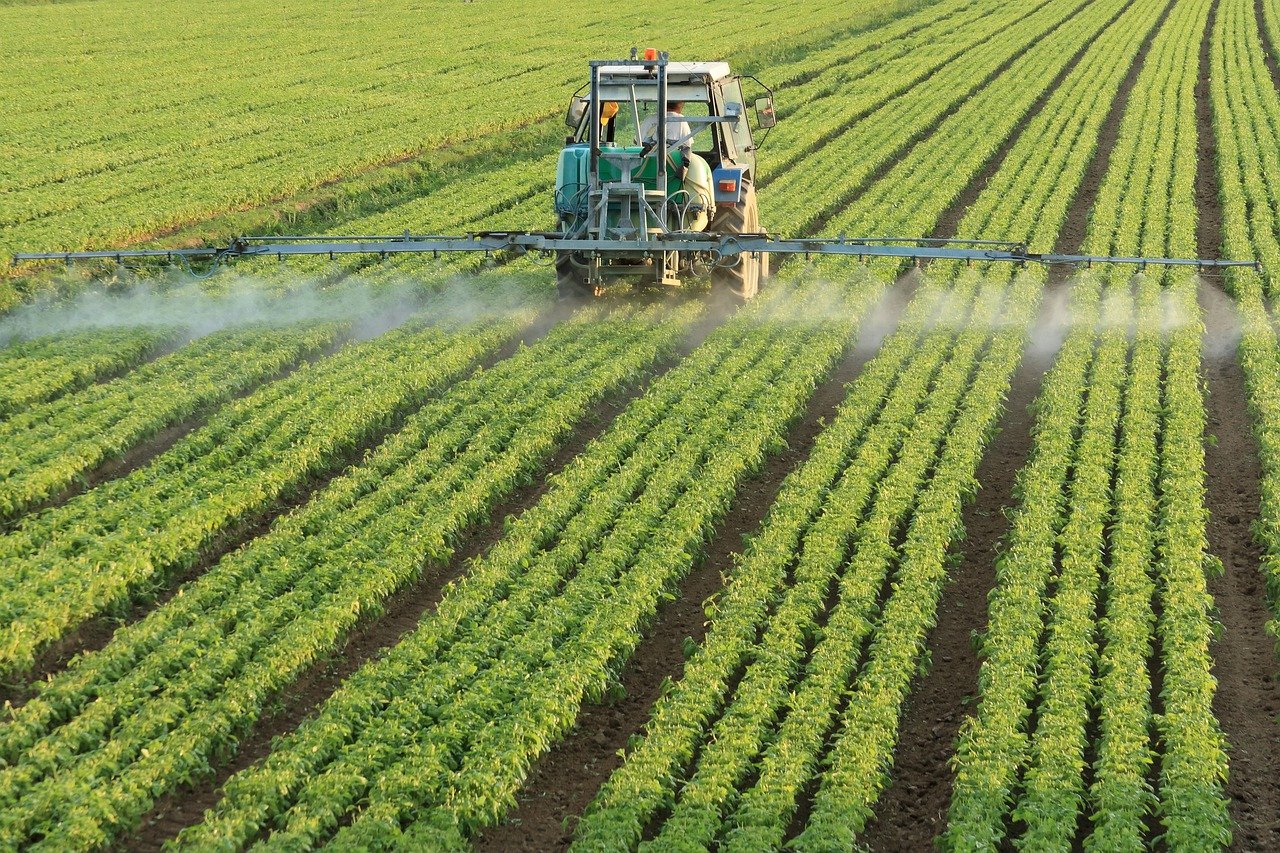
Agroecology
Agroecology is more than just a farming method; it's a holistic approach that intertwines agriculture with ecological principles. Imagine a vibrant tapestry where each thread represents a different aspect of the ecosystem, working together to create a resilient and productive environment. By integrating natural processes into agricultural practices, agroecology promotes biodiversity, enhances soil health, and ultimately supports the sustainability of freshwater ecosystems.
One of the standout features of agroecology is its emphasis on diversity. Diverse cropping systems not only improve soil fertility but also create habitats for various organisms, from beneficial insects to microorganisms. This diversity acts like a safety net, allowing ecosystems to withstand stresses such as pests, diseases, and climate change. For instance, planting cover crops can help prevent soil erosion and improve water retention, which is crucial for maintaining the health of freshwater systems.
Additionally, agroecology encourages the use of natural pest management techniques, reducing the reliance on harmful pesticides. By promoting the presence of natural predators, farmers can manage pest populations without damaging the surrounding ecosystem. This approach not only protects aquatic life from chemical runoff but also enhances the overall health of the agricultural landscape.
Furthermore, agroecology seeks to minimize water usage through efficient irrigation practices and rainwater harvesting. These methods not only conserve precious freshwater resources but also ensure that water quality remains high. By reducing runoff and soil degradation, agroecological practices contribute to cleaner waterways and healthier aquatic habitats.
To illustrate the benefits of agroecology, consider the following table that compares traditional agricultural practices with agroecological methods:
| Aspect | Traditional Agriculture | Agroecology |
|---|---|---|
| Soil Health | Dependence on chemical fertilizers | Focus on organic matter and crop rotation |
| Pest Management | Heavy pesticide use | Natural pest control and biodiversity |
| Water Use | Inefficient irrigation methods | Water conservation strategies |
| Biodiversity | Monoculture practices | Diverse cropping systems |
In summary, agroecology stands as a beacon of hope for sustainable agriculture. By embracing ecological principles, farmers can not only enhance their productivity but also contribute to the health of freshwater ecosystems. It's a win-win situation where both agriculture and the environment thrive together. As we move forward, the adoption of agroecological practices could be the key to solving many of the challenges we face in food production and environmental conservation.
- What is agroecology? Agroecology is an approach to agriculture that applies ecological principles to farming systems, promoting sustainability and biodiversity.
- How does agroecology benefit freshwater ecosystems? By reducing chemical runoff, enhancing soil health, and conserving water, agroecology helps maintain clean and healthy freshwater habitats.
- Can agroecology improve crop yields? Yes, diverse and resilient farming systems in agroecology can lead to improved crop yields over time, especially in the face of environmental stress.
- What practices are included in agroecology? Practices include crop rotation, intercropping, organic farming, and natural pest management, all aimed at enhancing ecosystem health.
Frequently Asked Questions
- How does agriculture impact freshwater ecosystems?
Agriculture affects freshwater ecosystems in various ways, primarily through runoff containing fertilizers and pesticides. This runoff can lead to nutrient pollution, which causes harmful algal blooms that threaten aquatic life and degrade water quality. Additionally, intensive farming practices can lead to habitat destruction, significantly impacting biodiversity within these ecosystems.
- What are the consequences of water quality degradation?
Water quality degradation can have severe consequences, including the decline of aquatic species and the disruption of food webs. Harmful algal blooms not only threaten fish populations but can also pose risks to human health through contaminated water supplies. The overall health of the ecosystem deteriorates, making it less resilient to environmental changes.
- How does agriculture contribute to biodiversity loss?
Intensive agricultural practices often lead to habitat destruction, which directly contributes to biodiversity loss. When natural habitats are converted into farmland, many species lose their homes, leading to a decline in their populations. This reduction in species diversity can weaken the ecosystem's resilience, making it more vulnerable to diseases and environmental changes.
- What role do invasive species play in freshwater ecosystems?
Agricultural activities can facilitate the introduction of invasive species into freshwater ecosystems. These invasive species often outcompete native species for resources, disrupting the ecological balance. The long-term presence of invasive species can lead to significant declines in native biodiversity and alter the functioning of the ecosystem.
- How does agriculture affect water availability?
Agriculture is one of the largest consumers of freshwater resources, which can lead to reduced water availability for both ecosystems and local communities. This demand for water can create conflicts over resources and necessitate the need for sustainable water management practices to ensure that both agricultural and ecological needs are met.
- What are sustainable agricultural practices?
Sustainable agricultural practices are methods that aim to reduce the negative impacts of farming on freshwater ecosystems. These practices include organic farming, which minimizes chemical runoff, and agroecology, which emphasizes biodiversity and ecological balance. By implementing these methods, farmers can promote healthier ecosystems while still producing food efficiently.
- What benefits does organic farming provide for freshwater ecosystems?
Organic farming reduces the use of synthetic chemicals, which helps to minimize runoff into nearby freshwater systems. This practice enhances soil health and promotes biodiversity, ultimately contributing to improved water quality. By fostering a healthier ecosystem, organic farming can help sustain aquatic life and support overall ecosystem resilience.
- How does agroecology help in protecting freshwater ecosystems?
Agroecology integrates ecological principles into farming, promoting practices that enhance biodiversity and ecosystem resilience. By utilizing methods that work in harmony with nature, agroecology can lead to sustainable food production while minimizing negative impacts on freshwater ecosystems. This approach helps ensure that agricultural practices do not compromise the health of vital water resources.



















